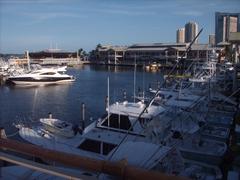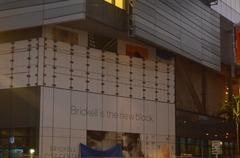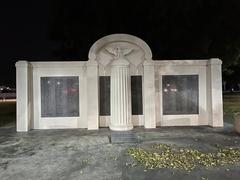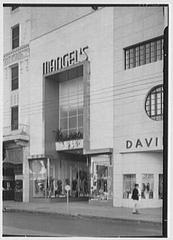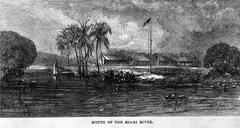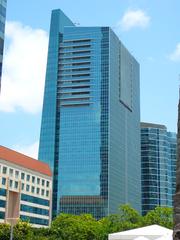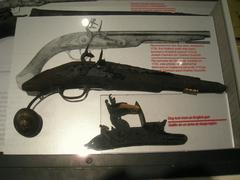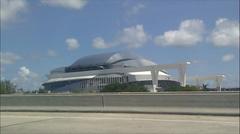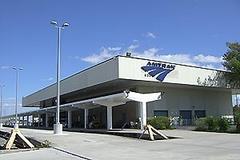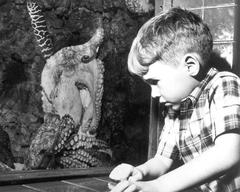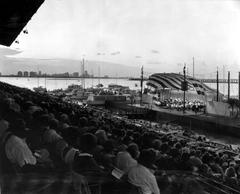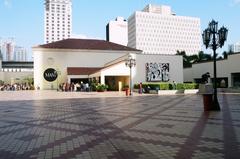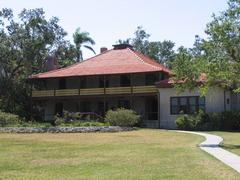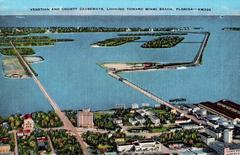
Miami Circle Visiting Hours, Tickets, and Historical Sites Guide
Date: 04/07/2025
Introduction to the Miami Circle
The Miami Circle, nestled at the mouth of the Miami River in downtown Miami, stands as one of the most extraordinary archaeological sites in the United States. Discovered in 1998 amid pre-construction surveys for a condominium development, the site consists of a flawlessly carved 38-foot-diameter limestone circle, carved directly into bedrock. Radiocarbon testing places its origin between 1,700 and 2,700 years ago, connecting it to the Tequesta people—an ancient Indigenous society that flourished in the region long before European contact. The Miami Circle’s discovery not only transformed our understanding of Miami’s deep-rooted history but also ignited a crucial preservation movement to safeguard the city’s Indigenous heritage. Today, the site is protected as a National Historic Landmark, offering free public access, interpretive signage, and occasional guided tours for visitors who wish to experience this remarkable piece of Miami’s ancient past (Florida Rambler, Hidden History Miami, Miami Circle Official).
Table of Contents
- Miami Circle’s Ancient History and Cultural Significance
- Visitor Information: Hours, Tickets, and Access
- On-Site Experience: Amenities and Etiquette
- Preservation, Challenges, and Community Advocacy
- Nearby Historical Attractions
- Frequently Asked Questions (FAQ)
- Plan Your Visit and Stay Connected
- Sources and Further Reading
Miami Circle’s Ancient History and Cultural Significance
Discovery and Archaeological Importance
The Miami Circle, also known as the Brickell Point Site, was unearthed during a 1998 archaeological survey. The discovery revealed a geometric limestone formation featuring 24 large basins and hundreds of smaller postholes. These features strongly suggest the foundation for a substantial wooden structure, possibly a chief’s residence, council house, or ceremonial building.
Radiocarbon analysis of recovered artifacts and charcoal places the site’s construction between 500–600 BCE and 1200 CE (Hidden History Miami), cementing its role as a vital settlement or ritual center for the Tequesta people. This Indigenous group thrived in southeastern Florida as skilled fishermen and gatherers, relying on the Miami River and Biscayne Bay’s rich resources. Artifacts such as shell tools, pottery, and ornaments recovered from the circle further illuminate Tequesta life and customs.
Cultural and Spiritual Significance
The Miami Circle’s precise geometry and alignment indicate an advanced understanding of engineering and possibly astronomy by its builders. While the site’s exact function remains the subject of scholarly debate, prevailing theories point to its use as a central social or ceremonial venue for the Tequesta. The Circle’s discovery and subsequent preservation efforts have made it a symbol of the enduring cultural and spiritual legacy of Miami’s Indigenous peoples (Florida Rambler).
Visitor Information: Hours, Tickets, and Access
Location and Directions
- Address: 401 Brickell Avenue, Miami, FL 33131
- Access: The site is conveniently located in downtown Miami, adjacent to the Brickell Avenue Bridge and the Miami River’s mouth. It is accessible via public transit (Metrorail Brickell Station, Metromover Fifth Street Station), ride-shares, and on foot or bicycle along the Miami Riverwalk (AmberStudent Miami Guide).
Miami Circle Visiting Hours
- Open daily from sunrise to sunset. Most visitors recommend early mornings or late afternoons for a quieter, cooler experience.
Tickets and Admission
- Admission is free. No tickets or advance reservations are required.
Accessibility
- The site features paved, wheelchair-accessible paths and ramps.
- Interpretive signage offers historical context, though amenities are minimal.
- Nearby public facilities and restaurants are available in the Brickell district.
On-Site Experience: Amenities and Etiquette
What to Expect
- The original limestone circle is buried beneath turf for preservation, with its outline marked by limestone benches and fencing.
- Informational signs provide historical and archaeological context.
- The park, though modest in size, offers tranquil river views and a respite from the urban bustle.
Amenities
- Restrooms and Food: None on-site, but numerous options are available in proximity.
- Seating: Benches and shaded areas along the park perimeter.
Visitor Etiquette
- Stay on designated paths and outside the fenced area to protect the site.
- Photography is encouraged; drone use requires special permission.
- The park is dog-friendly, but dogs must remain outside the fenced circle area (Hidden History Miami).
Preservation, Challenges, and Community Advocacy
Preservation Efforts
Upon discovery, the Miami Circle faced imminent threat from urban development. Intense advocacy by local communities, Indigenous groups, and preservationists led to the State of Florida purchasing the site for $26.7 million. It was subsequently listed on the National Register of Historic Places (2002) and designated a National Historic Landmark (2009) (Miami Circle Official).
Ongoing Challenges
- Urban Development: The rapid growth of Brickell poses continual risks to the Circle and other archaeological sites. Some nearby sites have faced partial or total destruction (Dade Heritage Trust).
- Preservation Policies: Miami lacks a consistent city-wide framework for managing archaeological resources, leading to inconsistent protections.
- Funding: Preservation relies on intermittent public funds, donations, and grassroots activism.
- Interpretation: Limited on-site signage and amenities sometimes hinder public appreciation.
Community Engagement
Persistent activism, educational programming, and public events help maintain awareness and protection of the Miami Circle. Archaeologists and local historians continue to advocate for improved interpretation and resource allocation (Hidden History Miami).
Nearby Historical Attractions
While visiting the Miami Circle, consider exploring these nearby Miami historical and cultural sites:
- HistoryMiami Museum: In-depth exhibits on Miami’s Indigenous and urban heritage.
- Brickell City Centre: Modern shopping and dining destination.
- Miami Riverwalk and Baywalk: Scenic pedestrian routes along the river and bay.
- Bayside Marketplace: A lively shopping, dining, and entertainment district.
- Royal Palm Circle: Another archaeological site showcasing Indigenous heritage.
Frequently Asked Questions (FAQ)
Q: What are the Miami Circle’s visiting hours?
A: Daily from sunrise to sunset.
Q: Is there an entrance fee or ticket required?
A: No, admission is free.
Q: Is the site wheelchair accessible?
A: Yes, with paved walkways and ramps.
Q: Are guided tours available?
A: Occasional free tours are offered by appointment or via local heritage organizations. Check the official website or local visitor centers for schedules.
Q: Can I take photos at the Miami Circle?
A: Yes, photography is allowed. Drones require special permission.
Q: Are restrooms or food vendors available on site?
A: No, but Brickell’s amenities are within walking distance.
Plan Your Visit and Stay Connected
Visiting the Miami Circle is a unique way to connect with Miami’s ancient past amid its modern skyline. To enhance your experience:
- Arrive early or late in the day for optimal weather and lighting.
- Review online resources or attend local lectures for deeper historical context (Florida Department of State Bureau of Archaeological Research).
- Download the Audiala app for guided audio tours and up-to-date visitor information.
- Combine your visit with nearby attractions for a full day of exploration.
Stay informed about preservation efforts, events, and updates by following Miami Circle’s official channels and related cultural organizations.
Images and Maps
Alt text for all images is optimized for “Miami Circle visiting hours” and “Miami historical sites.”
Sources and Further Reading
- Miami Circle: Exploring Miami’s Ancient Indigenous Heritage and Visitor Information, 2025 (Florida Department of State Bureau of Archaeological Research)
- Miami Circle: Visiting Hours, Tickets, and Exploring Miami’s Ancient Historical Site, 2025 (Florida Rambler)
- Visiting Miami Circle: Hours, Tickets, and Top Tips for Exploring Miami’s Historic Site, 2025 (Hidden History Miami)
- Miami Circle: Visiting Hours, Tickets, and Preservation Challenges of Miami’s Historic Site, 2025 (Miami Circle Official)
- Miami Circle Preservation Challenges, 2023 (Dade Heritage Trust)
- AmberStudent Miami Guide, 2025 (AmberStudent Miami Guide)
- The Miami Guide, 2025 (The Miami Guide)




